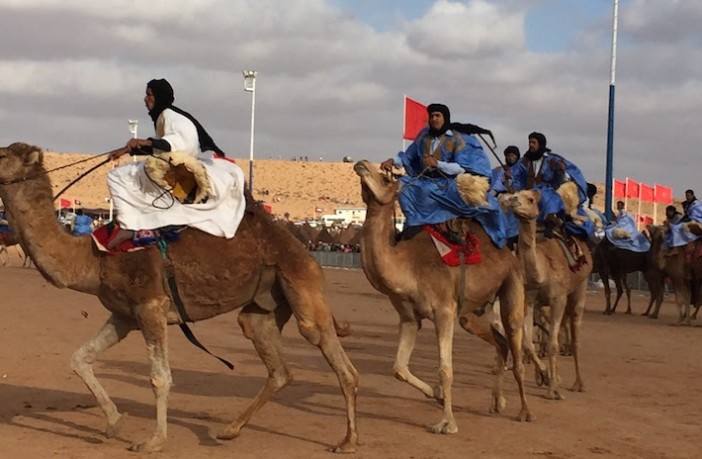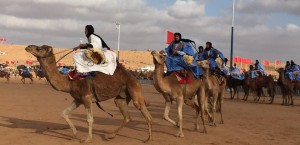Foreign Policy
Blog & photo credits:
By Lara Jakes
@LARAJAKESFP
TAN-TAN, Morocco — Sitting cross-legged on a brightly colored rug, Chettati Youssef proudly showed off his wares. Here, a golden candlestick made out of a ram’s horn. There, a hearth mantle crafted from plaster, paint, and old cloth.
Everything was made from discarded material he found and recycled into art – a new twist on a centuries-old nomadic habit of living off what is available.
“The free bird doesn’t repeat his songs — he always has something new,” said Youssef, one of dozens of craftsmen this past weekend at the Moussem of Tan-Tan, an annual festival in the Sahara Desert that celebrates – and hopes to preserve – Morocco’s tribal traditions and art. “The one in the cage only sings the same song.”
Up to 250,000 people were expected to attend the multiday festival in Tan-Tan, a windswept, midsized city in southern Morocco. Although the gathering is older than Morocco itself – the country won independence in 1956 – the moussem was shelved in the late 1970s during the Western Sahara war between Rabat and Algiers. It started up again in 2004, and UNESCO declared it a world heritage event a year later, giving more than 30 nomadic tribes from the region a stage to continue generations of meetings, trade, and fierce displays of horsemanship.
“The moussem was there before there were borders,” organizer Fadel Benyaich, who also serves as Morocco’s ambassador to Spain, said through a translator. “It has always been a part of our history, for tribes to show their own nomad cultures and traditions.”
Now the moussem has become an opportunity for artisans like Youssef — and Morocco itself — to lure potential foreign investors, even as the kingdom’s relationship with the United Nations grows increasingly strained over the very borders drawn on Bedouin lands.
In March, King Mohammed IV expelled most of the U.N.’s peacekeeping mission from the disputed Western Sahara region after Secretary-General Ban Ki-moon used the word “occupation” to describe Morocco’s claim over the area during its 25-year cold war with Algeria. The separatist Polisario Front continues to seek independence for the region, which links Algeria to the Atlantic Ocean, despite a 1991 cease-fire that failed to settle the land dispute.
The Security Council last month urged Morocco to allow the return of the peacekeepers, but with a divided vote that reflected reluctance among several developing nations and even world powers to condemn the kingdom. The dust-up was the main undercurrent of conversation at the moussem among the estimated 70 diplomats, investors, and journalists who were invited to attend as a guest of the king, including Foreign Policy. Moroccan officials at the event refused to provide a full list of the guests, but many were Chinese, Japanese, and Spanish.
The guest of honor was the United Arab Emirates, which officials said is investing $10 million in a camel racetrack outside of Tan-Tan, located about 130 miles north of the Western Sahara border. Also honored were artisans from each of Morocco’s 12 provinces — including the three that are under dispute, where Rabat is hoping to draw more investors.
“We want peace and business,” Ouled Dlim tribesman Sidati Cheguaf, a local politician, tomato grower, and camel owner from the Western Sahara port city of Dakhla, said in an interview Monday.
Cheguaf wants the region to remain an autonomous part of Morocco because he worries that the tribes that don’t win power in elections held in an independent Western Sahara state would never agree to be ruled by their rivals. He said it is up to the U.N. to resolve the longstanding impasse between Morocco and Algeria.
Showing off pictures on his iPhone of his desert camp of camels, Cheguaf acknowledged with a smile what he called the “evolving” dichotomy of the life of the Sahara Bedouin, from a nomad to an advocate of development. “Change is fine,” he said. “The Bedouin will carry his culture on the back of his camel, wherever he goes.”
Photo credit: LARA JAKES/Foreign Policy
.








